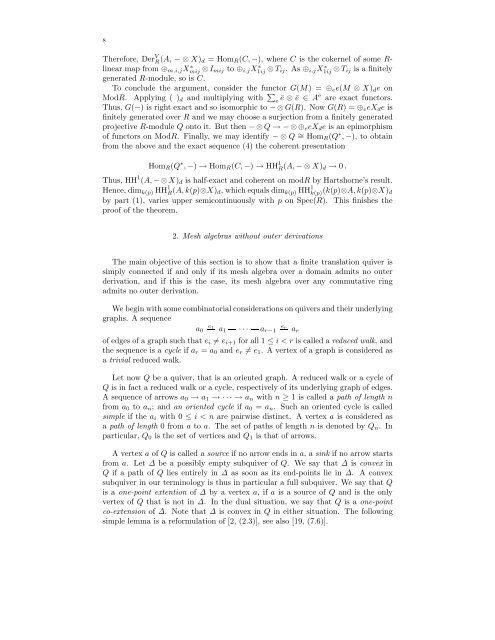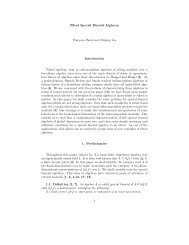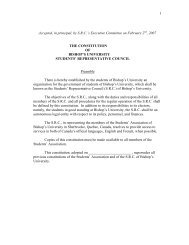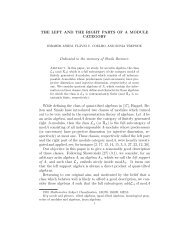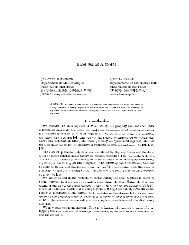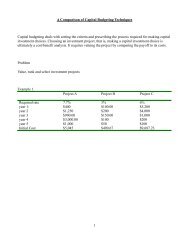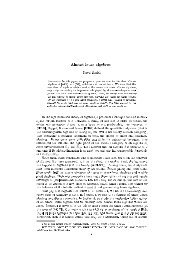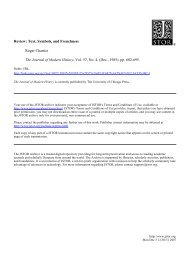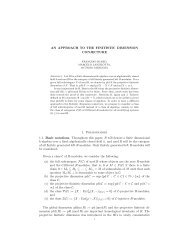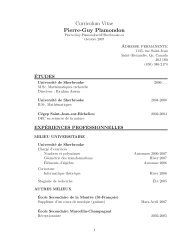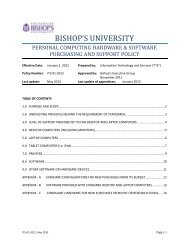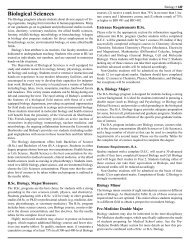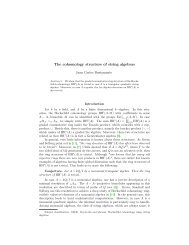Hochschild Cohomology and Representation-finite Algebras Ragnar ...
Hochschild Cohomology and Representation-finite Algebras Ragnar ...
Hochschild Cohomology and Representation-finite Algebras Ragnar ...
Create successful ePaper yourself
Turn your PDF publications into a flip-book with our unique Google optimized e-Paper software.
8<br />
Therefore, Der V R (A, −⊗X) d =Hom R (C, −), where C is the cokernel of some R-<br />
linear map from ⊕ m,i,j Xmij ∗ ⊗ I mij to ⊕ i,j X1ij ∗ ⊗ T ij. As⊕ i,j X1ij ∗ ⊗ T ij is a <strong>finite</strong>ly<br />
generated R-module, so is C.<br />
To conclude the argument, consider the functor G(M) = ⊕ e e(M ⊗ X) d e on<br />
ModR. Applying ( ) d <strong>and</strong> multiplying with ∑ e ē ⊗ ē ∈ Ae are exact functors.<br />
Thus, G(−) is right exact <strong>and</strong> so isomorphic to −⊗G(R). Now G(R) =⊕ e eX d e is<br />
<strong>finite</strong>ly generated over R <strong>and</strong> we may choose a surjection from a <strong>finite</strong>ly generated<br />
projective R-module Q onto it. But then −⊗Q →−⊗⊕ e eX d e is an epimorphism<br />
of functors on ModR. Finally, we may identify −⊗Q ∼ = Hom R (Q ∗ , −), to obtain<br />
from the above <strong>and</strong> the exact sequence (4) the coherent presentation<br />
Hom R (Q ∗ , −) → Hom R (C, −) → HH 1 R(A, −⊗X) d → 0 .<br />
Thus, HH 1 (A, −⊗X) d is half-exact <strong>and</strong> coherent on modR by Hartshorne’s result.<br />
Hence, dim k(p) HH 1 R(A, k(p)⊗X) d , which equals dim k(p) HH 1 k(p)(k(p)⊗A, k(p)⊗X) d<br />
by part (1), varies upper semicontinuously with p on Spec(R). This finishes the<br />
proofofthetheorem.<br />
2. Mesh algebras without outer derivations<br />
The main objective of this section is to show that a <strong>finite</strong> translation quiver is<br />
simply connected if <strong>and</strong> only if its mesh algebra over a domain admits no outer<br />
derivation, <strong>and</strong> if this is the case, its mesh algebra over any commutative ring<br />
admits no outer derivation.<br />
We begin with some combinatorial considerations on quivers <strong>and</strong> their underlying<br />
graphs. A sequence<br />
a 0<br />
e 1<br />
a 1 ··· a r−1<br />
e r<br />
a r<br />
of edges of a graph such that e i ≠ e i+1 for all 1 ≤ i


